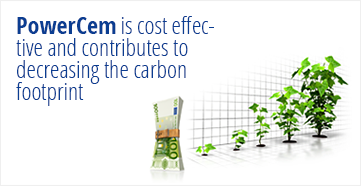Projects
Construction of Floor

In Saint Petersburg, a large German electronics group will be constructing a distribution centre for storing computer equipment. The storage area will encompass 8,000m2 of floor space. RoadCem stabilisation has earned a solid reputation, and the electronics group was quick to recognise its potential.
On the adjacent outdoor terrain, the effectiveness of RoadCem was proven after visual inspections showed a complete absence of damage over a period of 1 year, despite severe demands from telescopic cranes, intensive traffic and very cold temperatures! The risk of cracking is negligible because the floor plate is indoors and temperatures are more or less constant.
To cope with the extreme forces that the surfacing and subsoil would have to endure, the floor construction was structured from 0.35m of RoadCem stabilisation covered by an 0.06m ARC layer. The RoadCem layer has greater flexibility (the pulling forces impact the lower layers of the floor most) and the ARC is extremely solid (the top layer of the floor construction is subjected to heavier loads).
To guarantee the quality of the floor plate, the mixture will be mixed at a concrete plant and sieve analysis will be carried out on the sand. The stabilisation is then applied with an asphalt paver, and 3 weeks later, the ARC layer will be applied to the stabilisation. By securely bonding the ARC to the stabilisation, you create a single floor plate that prevents both internal strain (shrinkage, expansion) and external strain (forces exerted on the floor construction) from damaging or cracking the floor.








